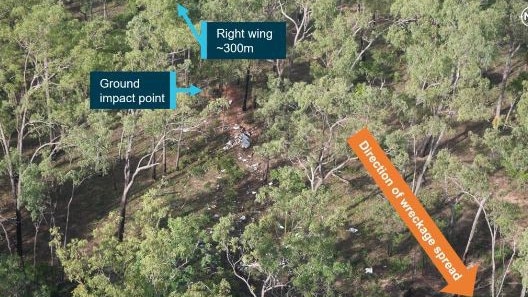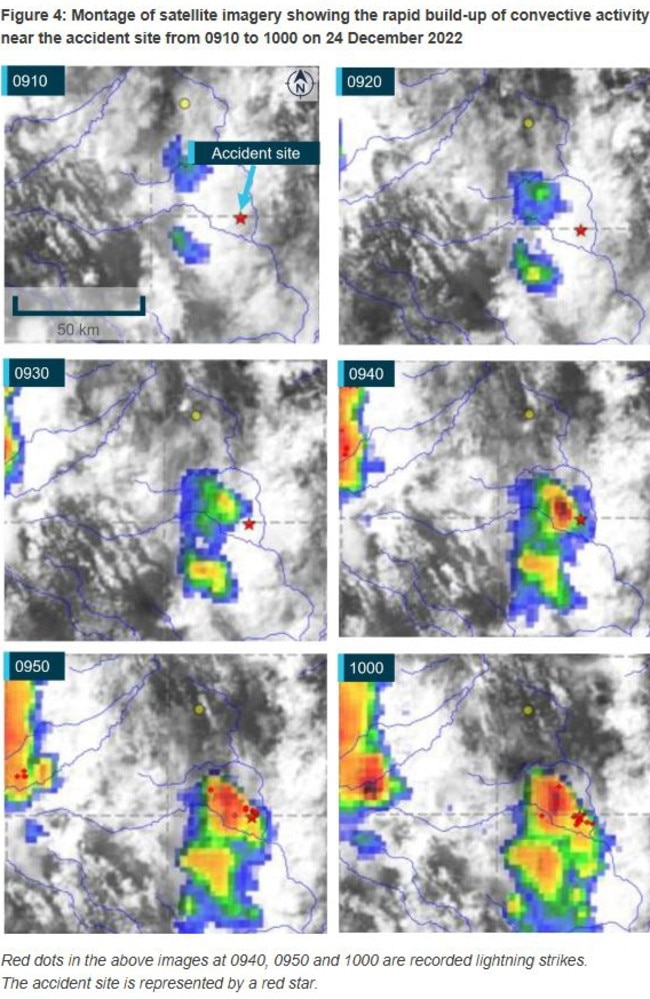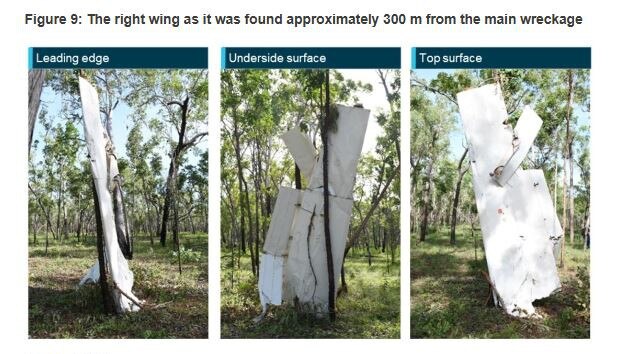Cessna carrying pilot Rhys Annis-Brown and pasenger en route to Tindal broke up midair, ATSB finds
The Australian Transport Safety Bureau has released its final report into a fatal plane crash in the Roper Gulf region that killed a young pilot from Qld and his female passenger. Here’s what most likely happened.

Northern Territory
Don't miss out on the headlines from Northern Territory. Followed categories will be added to My News.
A single-engine Cessna 210N carrying a pilot and a passenger en route from Gove to Tindal sustained an in-flight break-up, the right wing separating from the fuselage, after flying into the eye of a thunderstorm, an investigation into the 2022 crash has found.
On Wednesday, the Australian Transport Safety Bureau (ATSB) released its final report into the Christmas Eve crash in the vicinity of Bulman, which claimed the life of Katherine Aviation pilot Rhys Annis-Brown, originally from the Gladstone region in Queensland, and his passenger.
The flight departed Gove Airport at 8.14am and was due to arrive at Tindal at 10.24am, but never arrived.
The following day – Christmas Day 2022 – a wreckage field was discovered about 237km east-northeast of Katherine, along the intended flight path.
“Upon arrival overhead the Bulman region, the aircraft likely entered an area of strong convective activity from a rapidly developing thunderstorm, which probably resulted in exposure to a combination of severe turbulence and reduced visibility for the pilot,” the ATSB report found.

“It is probable that a combination of turbulence encountered from the thunderstorm, airspeed, and control inputs led to the excessive structural loading and in-flight separation of the right wing from the fuselage before the aircraft collided with terrain.
“It could not be determined with certainty why the pilot flew in close proximity to the storm, however, it is possible that they were in the process of diverting or turning back when the break-up occurred and/or the severity of the storm was not apparent.”
The report also found Mr Annis-Brown, the pilot, was inexperienced, having only commenced at Katherine Aviation, his first commercial flying gig, in August 2022, four months before his death.

However, he was described by colleagues as “professional and meticulous with their selection of speed and power settings when operating the Cessna 210 aircraft”.
The ATSB found there was no evidence Katherine Aviation had placed pressure on Mr Annis-Brown or any other pilots to conduct flights when the weather was a “bit iffy”, as Mr Annis-Brown described it on the morning of his death.
The report listed steps taken by Katherine Aviation to further boost the safety of its pilots, including implementing mandatory annual training for wet season operations, bringing in satellite-based tracking and communication devices for pilots that work even without mobile signal, and developing new flight assessment tools for marginal weather operations.

The bureau said the Territory’s annual wet season provided pilots with a “challenging and hazardous operating environment”.
“Identifying and maintaining adequate clearance from thunderstorms is critical to flight safety,” the ATSB said.
“The United States Federal Aviation Administration recommends that thunderstorms be avoided by at least 20 nautical miles.
“Weather radar and satellite imagery can assist planning and in‑flight storm avoidance, provided their limitations are understood.
“Contacting the duty Bureau of Meteorology forecaster... on the relevant geographical area forecast is the best way for pilots to assess the viability of a planned route, particularly if the forecast is marginal and the weather is changing.”





